Don't miss any stories → Follow Tennis View
Follow2014 Australian Open Report Card (ATP)
A strange ending to the Australian Open did not outweigh the many fascinating storylines produced by the leading men (and some lesser men) this fortnight. Here is their report card from Melbourne.
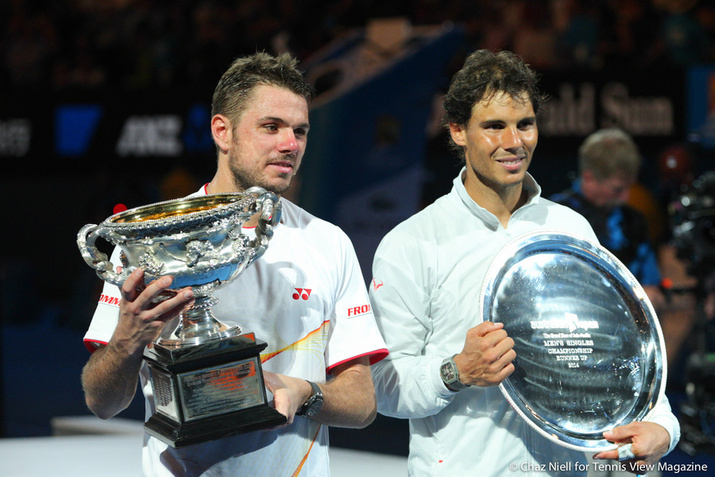
Stanislas Wawrinka: Good things can happen to those who persevere and work hard. Wawrinka had lost 14 straight matches to Novak Djokovic, including two at hard-court majors last year. He never had won a set from Rafael Nadal. In 35 appearances at majors, he never had reached a final. (No man except Goran Ivanisevic had appeared at more majors without winning a title.) And yet Wawrinka swatted aside all of the long odds against him, riding a potent serve and his glorious one-handed backhand to the most startling title run of any man since the Federer/Nadal era began. Victories over No. 2 Djokovic and No. 1 Nadal recalled what Juan Martin Del Potro did at the 2009 US Open in defeating Nadal and Roger Federer consecutively to claim the title.
The difference here, though, was that nobody envisioned Wawrinka as a major champion or top-five contender, least of all himself. He started 2013 ranked at No. 17 and will rise to No. 3 on Monday. Having seen what Wawrinka could do, other long-oppressed victims of the Big Four might take note. It will be intriguing to see whether his breakthrough spurs other men to believe in their ability to achieve what long seemed unthinkable. But that is much easier said than done, as is winning a first major at age 28. Wawrinka has come out of Federer’s shadow at last, something that never seemed possible. Valedictorian
Rafael Nadal: Despite the alarming note on which his tournament ended, a longer view reveals plenty in which he should take pride. Through six rounds, Nadal looked far and away the best player in the draw as he lost just one set and dominated one of his leading rivals in Roger Federer. During their semifinal, he showed the same degree of comfort and confidence on hard courts that he exuded last year, and that might lead to his breaking Federer’s record for major titles someday. The tide turned dramatically from the euphoria of that victory, and it turned almost overnight, as it often does in this cruel sport. The quest for his 14th major title will be postponed until he recovers from his third Australian Open injury in the last five years.
Nadal’s mature career has followed a pattern of ebbs and flows. A transcendent 2008 preceded an injury-riddled 2009. After winning three majors in 2010, he became the trampoline for Djokovic’s ascent in 2011. Having finally solved Djokovic in early 2012, he missed the second half of that season with recurring tendinitis. After one of his most spectacular campaigns ever in 2013, an arid 2014 may lie ahead. Or it may not. The tennis world holds its breath. A
Djokovic vs. Wawrinka, The Sequel: Rarely does a remake live up to the original. Their second straight meeting Down Under proved an exception to the rule and an eerie mirror image of last year’s epic. Once again, one player failed to arrive until midway through the second set. Once again, that player appeared to turn the tide in the second and third sets. Once again, his opponent eked out a tight fourth set and claimed an early break in the fifth. And, once again, the tide turned a final time when the player who dominated the second and third sets secured the decisive, match-ending break. This has become the most intriguing ATP rivalry not involving two members of the Big Four. And, more to the point, Wawrinka’s victory ensured that it is in fact a rivalry. A
Grigor Dimitrov: What a difference a year and a new coach makes for Dimitrov. With Roger Rasheed propelling him, he made a quantum leap from a wilting, cramping underachiever to the spearhead of the ATP’s next generation. Dimitrov became the second of that group after Jerzy Janowicz to crack a major quarterfinal, having survived the second round only once before. Not content with that achievement, he threw a serious scare into Nadal during the first three sets of their quarterfinal. Dimitrov probably was unfortunate not to win at least two of those sets as he showcased vastly improved movement, fitness, and willpower. He’s not just “Baby Fed” anymore. Skip a grade
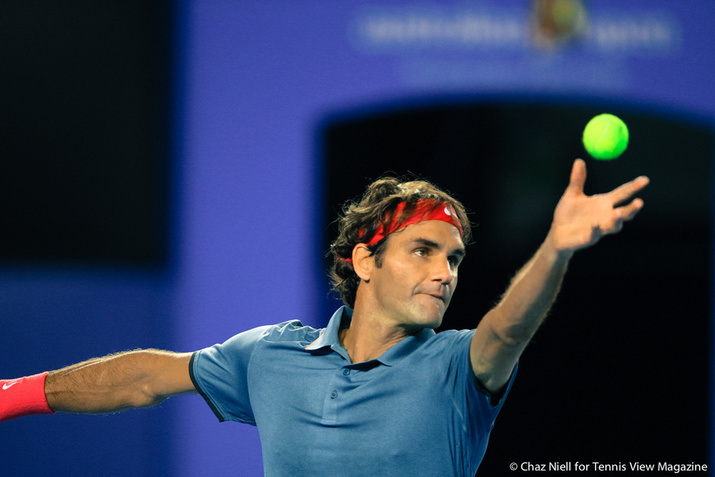
Roger Federer: Adding Stefan Edberg to his team may have proved pivotal in galvanizing Federer out of his 2013 doldrums. For the first time since he last won Wimbledon, he delivered consecutive victories over top-10 opponents at a major. Federer brought vintage form to his clinical dissection of Jo-Wilfried Tsonga and his revenge for a loss at last year’s Australian Open to Andy Murray. Coming to the net 66 times against Murray, the Swiss star brought back the old times for an evening. Then he thudded back to reality with yet another loss to Nadal, although that felt rather like old times too. Dropping to No. 8, his lowest ranking since 2002, does not reflect what might be a first step back from the wilderness. A-
Tomas Berdych: Not until the second set of his quarterfinal did the mighty Czech drop his serve this year. While Berdych exploited a toothless draw through the first four rounds, he had fallen victim to upsets at majors more often than most elite men. His steadiness thus started his season on an encouraging note, as did his four-set victory over Ferrer. Berdych flirted with wasting a two-set lead in that match, but he found the poise to right the ship. Impenetrable on serve throughout the tense, critical fourth set, he has reached the semifinals at every major. No other man outside the Big Four can say as much. Berdych’s long-standing futility against the less accomplished Wawrinka is odd, though. A-
Andy Murray: Heading into this fortnight, expectations lay low for a man who had played just two competitive matches since undergoing back surgery last fall. Like Maria Sharapova in the women’s draw, Murray looked rusty in some of his early matches and succumbed to his first quality opponent. This perfectionist cannot have felt satisfied with his execution in that four-set loss to Federer, yet the Scot did succeed in the goal of accumulating live action. Now he needs to make a statement at Indian Wells and Miami, before the futile clay season, so that he brings momentum to Wimbledon. Incomplete
Federer vs. Nadal rivalry: The pattern has grown all too familiar in recent years. Memories of their 2006-09 classics build mountains of hype before each match, which then falls well short of expectations. Federer bursts out to a fast start before Nadal wears him down more through steadiness than spectacular shot-making. In large part, this is because the five-year gap between them looms ever larger as Federer ages. Nadal now has won five straight meetings, 11 of their last 12 sets, and nine of their last 10 outdoor meetings. Many have felt sorry to this rivalry fade from the marquee stages of finals to quarterfinals and semifinals. But that will keep the spotlight on the matches nearest its peak, when both the stakes and the quality rose highest. Honorary Degree
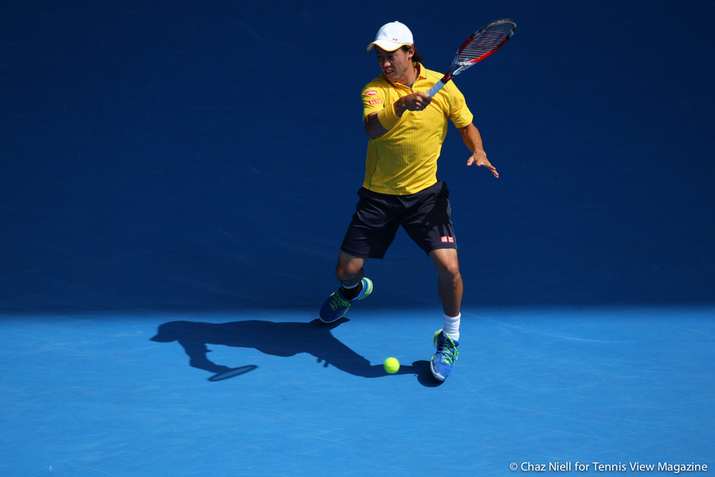
Kei Nishikori: His partnership with Michael Chang started on a high note with another second-week appearance, in which his loss was arguably more impressive than any of his victories. Dominated by Nadal in their previous meetings, Nishikori battled the world No. 1 tooth and nail for over three hours. He could have won any or all of their sets, had just a handful of points gone the other way. Never has Nishikori looked so confident in his ability to play with the big boys. B+
David Ferrer: The Roland Garros final last year looks increasingly like the pinnacle of Ferrer’s career, from which a slow but inexorable descent will unfold. The world No. 3 fell in the quarterfinals for the second straight hard-court major, not a poor result but not a great result for a serial semifinalist. Ferrer lost sets to two unseeded opponents, and he dug himself too deep a hole against Berdych for his famous fighting spirit to matter when it finally surfaced. B
Jo-Wilfried Tsonga: There was little that Tsonga could do about running into Roger Federer on a night when Federer looked as sharp as he ever has in the last few years. Only three players (and you know who they are) could have troubled the Swiss star in that vintage form. Looking beyond the lopsided loss, Tsonga appeared to have strengthened some of his weaknesses over the offseason. His backhand betrayed him less often, and his body seems to have recovered from last year’s breakdown. B
Lucky losers: Substituted into the draw at the last moment, Stephane Robert and Martin Klizan made the most of their opportunities. Robert ironically won more matches in the main draw than he had in the qualifying draw, collecting $135,000 in prize money with a shocking second-week run. The Frenchman dominated his first-week opponents, including a third-round rout of Klizan. But the Slovenian will have gone home happy with his own fat check as well. Extra credit
Milos Raonic: The 11th-seeded Canadian once looked like he would be the first man from his generation to break through at a major. But first Janowicz and then Dimitrov have vaulted past Raonic in reaching the watershed moment of a major quarterfinal sooner. As other players his age refine their games, learn from experience, and develop mental toughness, not much about Raonic seems to evolve. Stability can be good, or it can be another form of stagnation. Repeat a grade
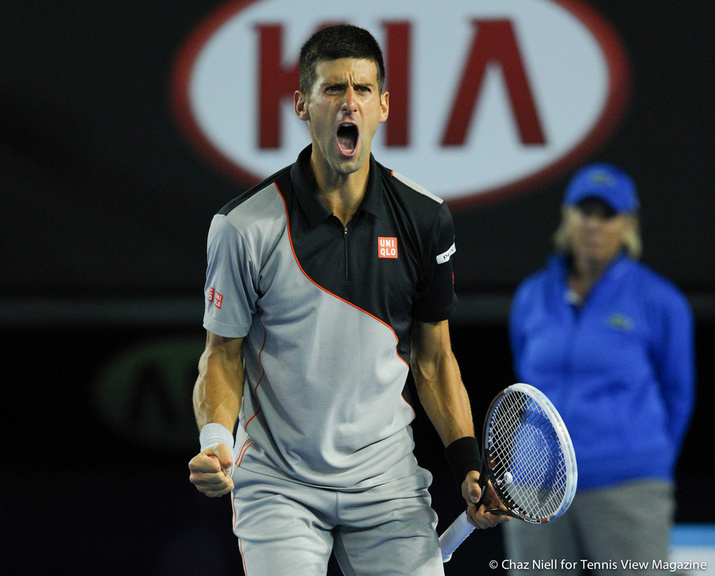
Novak Djokovic: At his last four majors, Djokovic has two runner-up trophies and two 9-7 losses in fifth sets. It is still true that only a superb performance can stop him. But that does not excuse his earliest loss at a major in nearly four years, his first loss at a major to someone outside the Big Four in 75 matches, or the fact that Djokovic now is the reigning champion at no major for the first time since 2010. Some will point fingers at new coach Boris Becker, which is premature. Just one tournament into his coaching tenure, Becker cannot be blamed for Djokovic's regression as a clutch player at majors over the last 12 months. That is something that the Serb must solve from within before rising again. B-
Australian men: It was a strange tournament for the home hopes, some of whom received brutal draws. The more familiar names crashed out early, while some budding youngsters surpassed expectations. Bernard Tomic retired one set into his home major before undergoing hip surgery, and Lleyton Hewitt could not build on his stirring victory over Federer in Brisbane. The two-time major champion suffered a frustrating five-set loss in the first round to Seppi after holding a match point. Much brighter was the news coming from promising prospects Thanasi Kokkinakis and Nick Kyrgios. Each of them won main-draw matches, and Kyrgios thrust a top-30 opponent into a two-set hole before fading. Matthew Ebden also earned a measure of consolation for Melbourne meltdowns past by winning a five-setter from fellow hard-luck veteran Nicolas Mahut. B-
Richard Gasquet: Some people thought that the famously flaky Frenchman had turned a corner last year at the US Open, when he reached the semifinals with a five-set triumph over Ferrer. Not so fast. The more familiar form of Gasquet—passive, nervy, poor in the clutch—returned in a first-week loss to Robredo, one of several blows that Spain struck against France in the men’s draw. C+
Tommy Haas: Has age finally caught up to a man who will turn 36 this year? One of the most heart-warming stories of 2013 emerged from the German’s ability to compete with the elite, highlighted by an upset of Djokovic. But nobody keeps time at bay forever, and a first-round retirement on the heels of injuries last fall suggests that the sand may run out of this hourglass soon. Doctor’s note
American men: None of them reached the second week, again. But the tournament still didn’t feel like an unmitigated disaster. When the only top-50 player retired with an injury, after all, one couldn’t expect any second-week heroics. Both Sam Querrey and Donald Young registered quality wins over higher-ranked opponents in Ernests Gulbis and Andreas Seppi, respectively. Young in particular should take confidence from his two wins here, which extended recent success at the Challenger level. For the foreseeable future, that sort of moral victory is all that Americans can ask from a group that (outside John Isner) simply lacks the talent to threaten the best. Gentleman’s C
Boris Becker: He may or may not be the right fit for Djokovic, and we probably won’t know the answer for months to come. That said, it was fun between sets to see Becker rise from his seat and glower toward Rod Laver Arena, garbed in black with his arms folded across his chest. In an era of nice guys, tennis still needs unapologetic villains. D for Diabolical
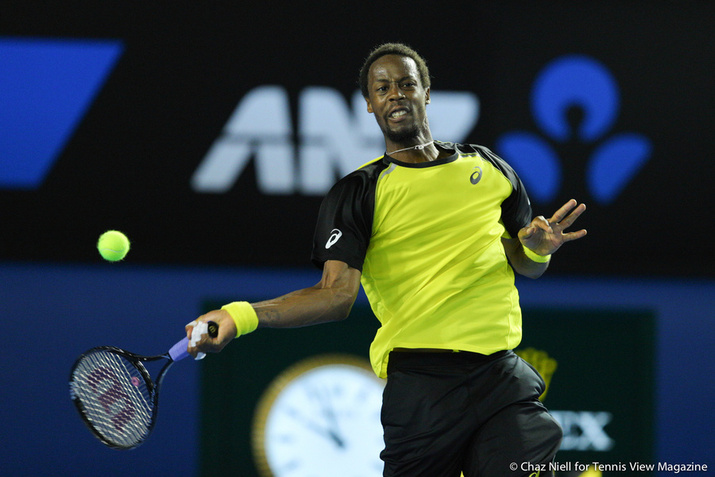
Gael Monfils: Few blowouts in recent memory have entertained more than his evening encounter with Nadal on Rod Laver Arena. Seemingly disinterested in the scoreboard, Monfils went for ridiculously implausible winners from start to finish. His bomb-or-bust approach left him with a bust in the end, but he struck plenty of bombs along the way. Rarely does a player appear to enjoy himself so much at an event of this magnitude. E for Entertainment
Juan Martin Del Potro: Somebody by this name once defeated Nadal and Federer on consecutive days to win the US Open, and defeated every member of the Big Four last year. Somebody by this name has lost in the first week at the last three hard-court majors to Jeremy Chardy, Lleyton Hewitt, and Roberto Bautista Agut. Will the real Del Potro please stand up? F










